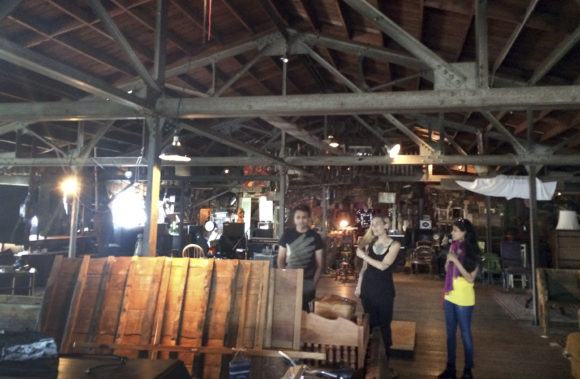People in the business of insuring warehouses, especially those where artists may be tenants, have been on high alert since a deadly fire on Dec. 2, 2016, broke out in a converted warehouse in Oakland, Calif.
The so-called “Ghost Ship” warehouse which was also reportedly used as an artists’ colony, was hosting a $10-a-head music performance and party when the building caught fire and took the lives of 36 people. The scene reportedly had makeshift stairs and room dividers, making escape difficult.
It is considered the deadliest building fire in the United States in more than a decade.
The first of a series of likely lawsuits was filed in late December by the parents of San Francisco State University student Michela Gregory, a 20-year-old who died in the arms of her boyfriend. The suit blames the building’s owner, chief tenant and others.
Gregory and the others at the party “tried to exit the warehouse but were unable to exit due to the unsafe conditions and configuration of the warehouse,” the lawsuit alleges.
Converted warehouses are popular in the Bay area, so people like Rich Gobler, corporate vice president in the San Francisco office of Burns & Wilcox, has people at his firm literally taking a hard look at warehouse properties.
He said a look outside the warehouse would have given a hint that more was going on there than the landlord may have been letting on.
“We are definitely asking more questions, confirming no habitation, taking a quick Google Earth street view,” said Gobler, whose office insures a number of warehouses.
Historically, the process on properties where the total insured value is under $250,000 has been to ask the landlord what the occupancy is, he said.
‘We are definitely asking more questions, confirming no habitation, taking a quick Google Earth street view … If we heard that now, we would inspect every time.”
In the past, “We wouldn’t have inspected it, we would have trusted them,” Gobler said. But, he added, now if someone says the word “artists,” an instant red flag is raised. “If we heard that now, we would inspect every time.”
After such a tragic event, insurance is likely the last thing on the minds of injured victims and their families. But as they look toward the future, it will become increasingly important to identify all potentially liable parties and hold them responsible for the financial harm caused by this event, according to Omid Safa, an insurance coverage lawyer with Blank Rome LLP.
“It’s fair to say brokers and agents who are thinking about selling general liability insurance may ask the question: Are you using the facility even sporadically for this type of event?'” Safa said.
If the answer is “yes,” brokers may want to look at including a liquor liability endorsement that would cover bodily injury, he added.
The Gregory lawsuit seeks unspecified damages from building owner Chor Ng, principal tenant Derick Almenda and others who lived and used the work spaces and makeshift rooms in the warehouse, and promoted the night’s event.
City officials say Ng had a business license for more than two decades on the property and has paid all business taxes.
The Alameda County district attorney’s office said it is evaluating whether any criminal charges are warranted in the blaze.
The reaction to the fire hasn’t been limited to the Northern California area.
Roughly a week after the fire, inspectors acting on a complaint discovered a makeshift nightclub and unpermitted living quarters concealed in a warehouse near Los Angeles International Airport.
Authorities searching the two-story building found an illegally constructed dance floor paired with a bar and DJ booth. Haphazard wiring snaked through walls, and an outdoor staircase capped by a bamboo canopy was flagged as a fire threat.
The unlicensed club, called Purple 33, was shut down. The operator, Donald Cassel, who also lived there, was ordered to clear out.
The Ghost Ship in Oakland was zoned for commercial use but it actually operated as an art collective and a venue for underground music performances, and home for some dozen itinerant tenants. Oakland fire inspectors and firefighters never inspected the warehouse before the Dec. 2 blaze, Oakland Fire Chief Teresa Deloach Reed acknowledged after the fire.
The Ghost Ship may not be the only converted warehouse operating outside of its intended use in the area. According to a Los Angeles Times article, city officials privately estimate Oakland has roughly 50 such illegal communities in various states of repair and with varying safety conditions.
Going forward, Safa said he believes that insurance brokers and carriers will be asking a lot more questions when they are dealing with warehouses in areas that tend to have properties with multiple uses.
Gobler, too, believes some insurers will be progressive after this lesson.
“I assume carriers are going to start putting habitational exclusions on warehouses,” Gobler said. Share this article with a colleague.
The Associated Press contributed to this report.
Was this article valuable?
Here are more articles you may enjoy.



 Chubb to Acquire MGA Healthy Paws From Aon
Chubb to Acquire MGA Healthy Paws From Aon  FBI Says Chinese Hackers Preparing to Attack US Infrastructure
FBI Says Chinese Hackers Preparing to Attack US Infrastructure  California Sees Two More Property Insurers Withdraw From Market
California Sees Two More Property Insurers Withdraw From Market  Allstate Reports $731M in Q1 Pretax Catastrophe Losses
Allstate Reports $731M in Q1 Pretax Catastrophe Losses 


